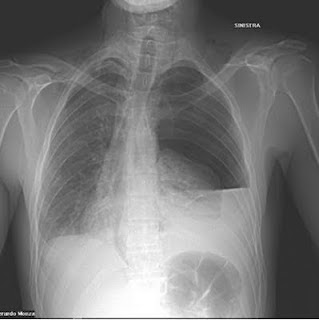 Nursing Assessment for Anxiety
Nursing Assessment for AnxietyAssessment of the physiological function and behavior change through a symptom or coping mechanism, as a defense against anxiety.
Assess the predisposing factors
Predisposing factor is all the tensions in life can cause anxiety such as:
- Traumatic events that can trigger a crisis of anxiety experienced by individuals, either developmental or situational crisis.
- Emotional conflict experienced by individuals and are not well resolved. The conflict between the id and super ego, or between desire and reality can lead to anxiety in individuals.
- Impaired self-concept will lead to the inability of individuals to think realistically that will cause anxiety.
- Frustration will lead to a sense of powerlessness to make decisions that impact on the ego.
- Physical disturbance will cause anxiety because it is a threat to physical integrity that may affect the individual's self concept.
- Patterns of family coping mechanisms, or patterns of families dealing with setres will affect individuals in responding to conflicts experienced as patterns of individual coping mechanisms widely studied in the family.
- History of anxiety disorders in families will affect the response of individuals in responding to conflict and overcome anxiety.
- Medications that can trigger anxiety.
Assess the precipitation stressors
Precipitation stressor is any tension in life that can trigger the onset of anxiety. Precipitation anxiety stressors grouped into two parts:
1. The threat to physical integrity. Tensions that threaten the physical integrity include:
- Internal sources, including the failure of the physiological mechanisms of the immune system, regulation of body temperature, normal biological changes (eg pregnancy)
- External sources include exposure to viral and bacterial infections, environmental pollutants, malnutrition, inadequate shelter.
- Internal source: difficulties in interpersonal touch at home and at work, adjustment to new roles. Various threats to the physical integrity of self-esteem may also be threatened.
- External sources: loss of a loved one, divorce, change of employment status, peer pressure, social culture.
Assess the behavior
Directly concerns can be expressed through physiological and psychological responses, and indirectly through floating coping mechanisms as a defense against anxiety.
1. Physiological response.
Activate the autonomic nervous system (sympathetic and parasympathetic)
2· Psychological Response
Anxiety can affect intrapersonal and personal aspects.
3· Cognitive Response.
Anxiety can affect your ability to think both the mind and isis thought, such is not able to pay attention, decreased concentration, forgetfulness, decline in the field of perception, puzzled.
4· Response affective.
Clients will be expressed in the form of confusion and suspicion over-emotional reaction to anxiety.
Nursing Diagnosis for Anxiety
- Panic related to the rejection of the family because of confused and failed to make a decision.
- Severe anxiety related to marital conflict.
- Anxiety was related to financial pressures.
- Ineffective individual coping related to the death of a sibling.
- Ineffective individual coping related to the impact of sick children.
- Fear associated with surgery plans.


















